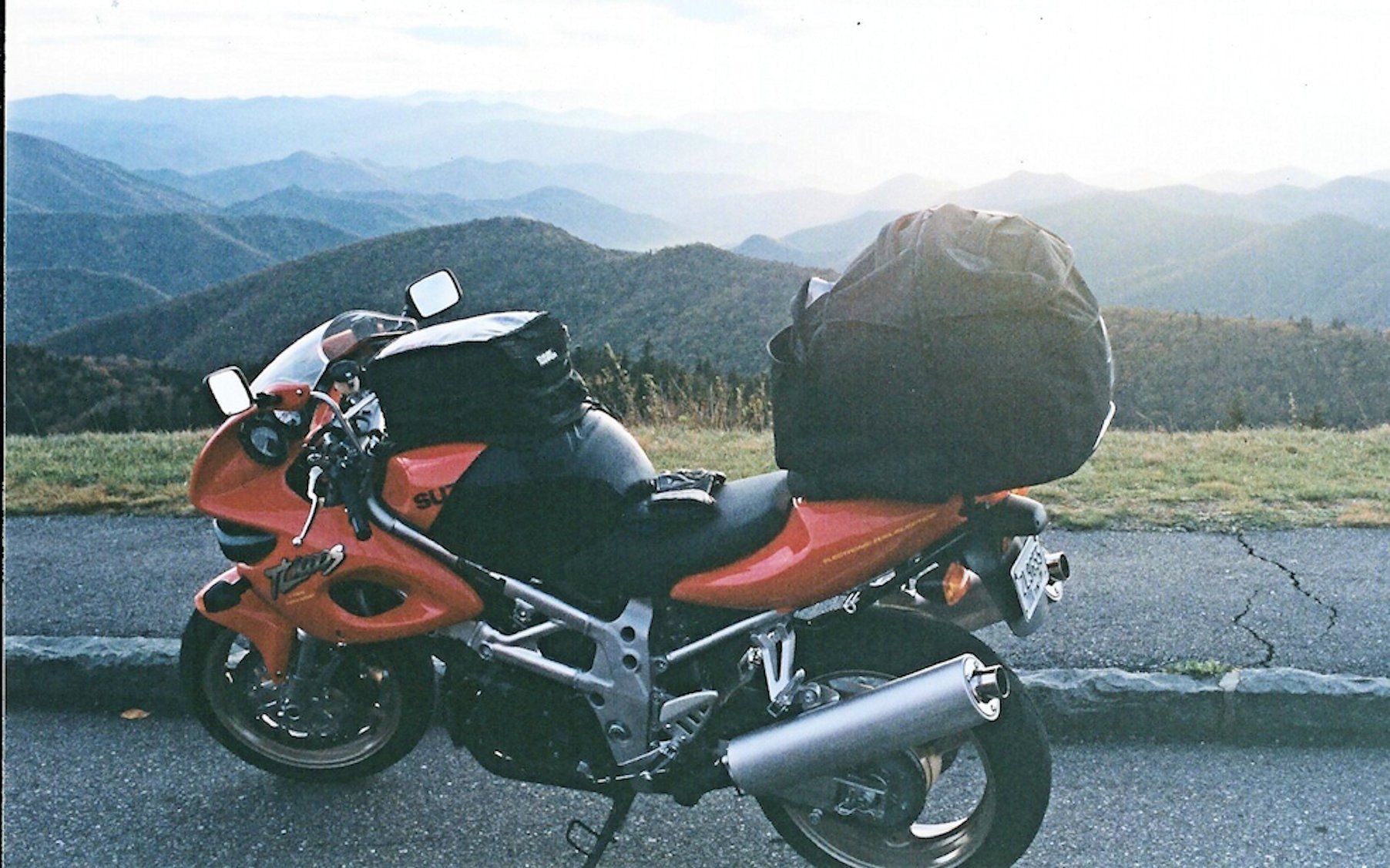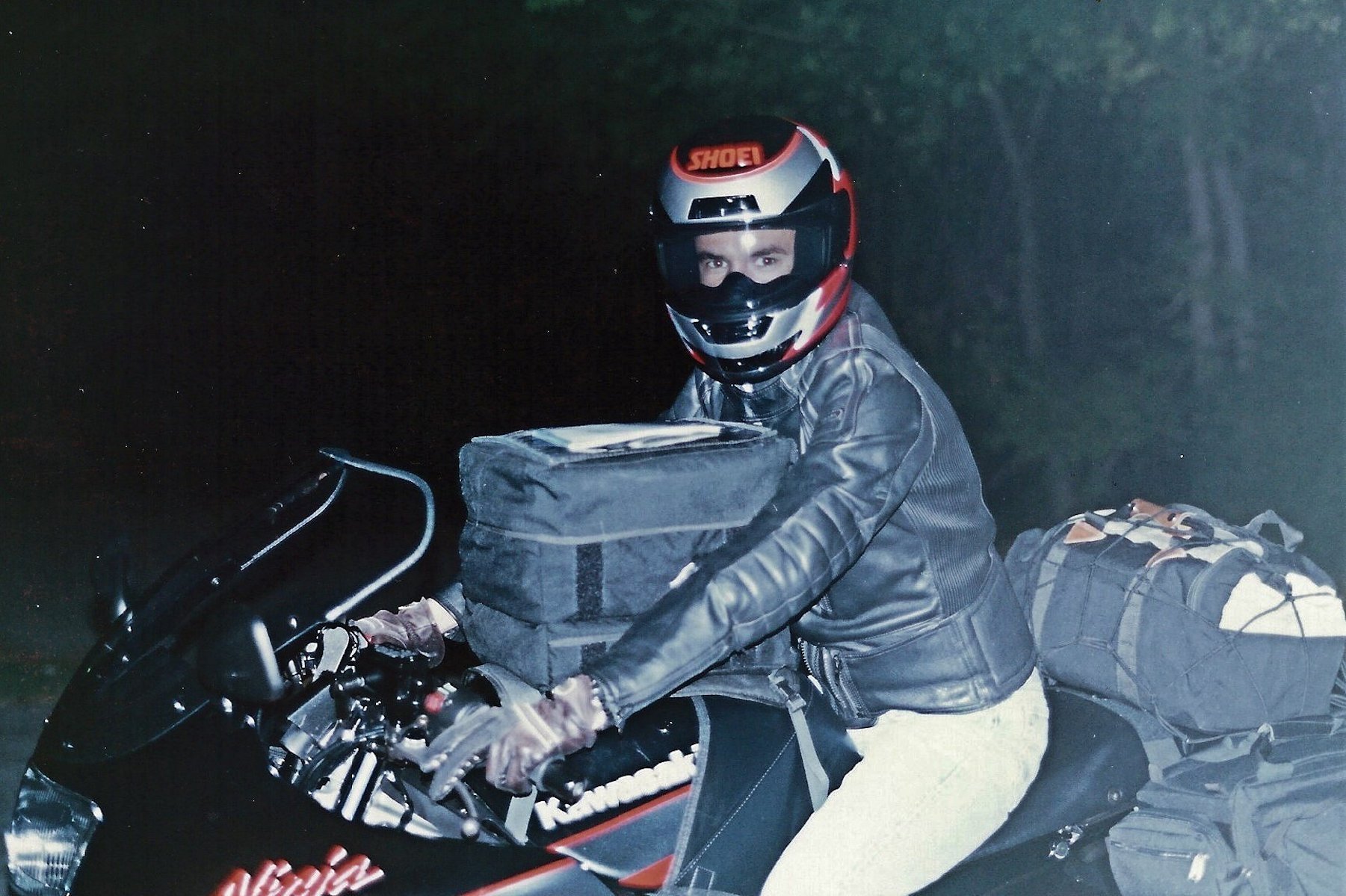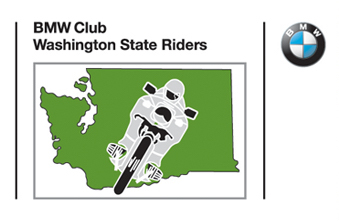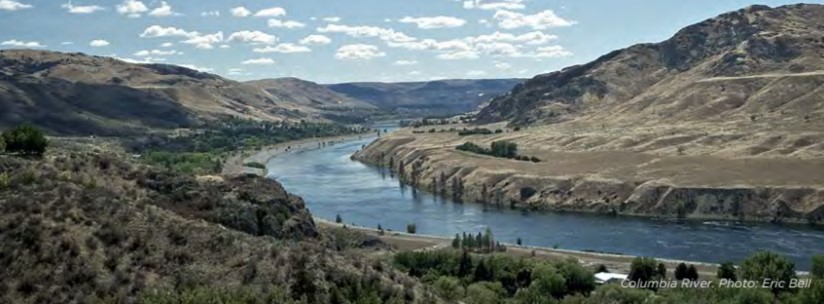This is the follow-up to my previous column, “Light makes right.” If you missed that one, I described packing my bike for the 2022 Rally in a way that minimized the weight I’d be adding to a motorcycle I already found intimidatingly heavy. I weighed the empty luggage (37 pounds) and the final contents I’d carry therein (41 lbs.). Multiple rounds of thinning and reorganizing were necessary to keep this weight as low as possible—in terms of both the total poundage and its distribution on the bike—while also facilitating access to what I’d need most. Even naked, my R 1250 RS outweighed all its predecessors in my garage by at least 100 lbs., and—given my small frame and 30” inseam—it took months to get used to maneuvering it at low speeds. I’d grown more comfortable with the big boxer by the end of my first year owning it, but adding nearly 80 more pounds sent me skittering backwards on the rider confidence scale. Having not taken a motorcycle trip in many years, I was concerned about this factor presenting yet another layer of challenge on my long, solo ride.
I’m pleased to report I not only had zero trouble on my journey dealing with the laden Rennsport’s weight, but I also underwent an internal recalibration such that the bike now feels (almost) svelte with its luggage removed for local riding. Of course, it’s all relative; the RS is still a large, heavy machine. But since we humans depend on contrast and comparison for much of our perspective, perceptions can change dramatically depending on familiarity and recent reference points. It was an impressive phenomenon, how the RS felt lighter as I spent a whole week on it, and on it alone. With little conscious effort, my body and mind adapted to the requirements of managing the loaded vessel, and its weight gradually faded into the background. I remained aware of those additional pounds during braking and low-speed work, but accommodating them became increasingly automatic instead of occupying centerstage in my attention and demanding tensely planned adjustments in my technique. However, center stand deployment definitely required good form: push down hard on that tang, while mainly just steadying the bike with my hands—and only on level pavement!

As described elsewhere (see “Baptism by Fire”), riding to Springfield in triple-digit heat was the part of the trip I found most daunting. That ordeal eclipsed my worries about managing the extra heft—a blessing in disguise, since I didn’t suffer any negative consequences from paying less attention to the weight issue. In fact, as with target fixation, I may have experienced more difficulty if I’d had the luxury of focusing on the bike’s burdened state. Well, the RS wasn’t really “burdened;” its magnificent engineering carried the day—and the load—readily without drama. Its self-leveling electronic suspension worked brilliantly, with braking and handling affected to a hardly noticeable degree. At speed, the single bit of evidence any luggage had come along for the ride was my occasional surprise at seeing its shadow during a head-check and momentarily mistaking that dark blob for a car creeping up on my flank. The only burden was borne by my apprehensive psyche, and, in the record-breaking heat, I unwittingly dumped that ballast onto the scorching asphalt behind me.
Lighter is always righter, though, and just because I’m now more accustomed to carrying a week’s worth of luggage on my bike doesn’t mean further streamlining is irrelevant. I filled two side cases, a top case, and a tank bag all by myself. If I ever take a passenger on a trip, I’ll have to cut way back. Even without sharing the available space, it would be good to reduce the weight further for my next solo tour. I thought I’d whittled down what I packed to the absolute bare necessities, but I found—as experienced touring riders would expect—I’d included lots of stuff I never needed.
Now, some of those contents can’t be jettisoned just because they went unused this time around. I was glad I didn’t need my first aid supplies, tools, battery jumper or tire repair equipment, but I doubt these are any less legitimate candidates for inclusion next time I tour. Ideally, such gear might be split among several fellow travelers, rather than filling an entire side case on my bike, but I can reduce its weight and bulk by pretending I have even less room for it. For example, if I needed to (and I’ll act like I do), I could retain the ability to refill a plugged tire by packing my trick folding hand pump instead of the fancy electric pump I toted to the rally. While manually inflating a 180/55-17 rear tire will certainly be more arduous, the tremendous relief of getting a disabled bike back on the road will surely outweigh any regret about the additional labor involved. Likewise, some of the emergency medical gear I’ve prudently carried into the wilderness off-road is probably overkill (pardon the word choice) on the road, where EMTs are available and will do a far better job with their own kit.

As for clothing, I was happily surprised at how easy and effective it was to wash my synthetic and Merino wool shirts, shorts, socks and underwear in a bathroom sink with plain old hand soap; everything dried reliably overnight. I purposefully recycled several garments like this and left the rest packed, to confirm what was possible. I didn’t win any fashion awards at the rally, but neither did anyone shun me because they recognized my outfit from two days ago. I found the cover I’d brought impossible to secure on the bike in the hotel’s windy parking lot, but the RS was no worse for wear without it. Subtracting the cover’s considerable bulk, along with that of my rain gear (I’ll wear Gore-Tex on my next tour), will vacate 35% of my top case’s volume. Also, two pairs of gloves handled (get it?) all conditions perfectly well; two more specialized pairs proved completely superfluous.
I’m a terrible over-packer, even with (make that especially with) fewer restrictions on what I can take. The more room I’ve got, the more stuff I squeeze into it. I’m guilty of a common feature of hoarding: If I can imagine a use for something, I feel compelled to hang onto it, whether we’re talking about mechanical scraps in my garage or articles going inside my suitcase. My default mindset doesn’t consider probability or value, so I must carefully assess the likelihood of each fantasized scenario, and the actual contribution the item would make, compared to its cost in weight and bulk. If I force this kind of reckoning, I can be more realistic. When working with tightly limited space, this is especially crucial. Having real-life experience from this trip as a basis for future decision-making will make it easier to relinquish things I’d previously have been very reluctant to leave behind.
I dug out two ancient photos—one on a TL1000S and one on a ZX-10—showing how I’d packed for long-distance travel on bikes ill-suited for such duty. The bulging soft luggage shows my excesses were even worse back then, and touring on motorcycles with much harsher ergonomics and highly weight-sensitive handling made such travels quite unpleasant in many respects. Good thing I didn’t know any better at the time, and simply considered my suffering part of the adventure—again, it’s all relative. I was also decades younger, which helped, too. Touring comprised a small minority of my overall time in the saddle because I found so many varieties of motorcycling irresistible, and I didn’t really have a proper setup. My entry into the BMW fold has introduced a vastly more sophisticated and palatable version of those earlier tours, which—despite their discomforts—were some of the most memorable events in my 50-plus years of motorcycling. As other types of riding now recede in my rearview mirrors, touring seems poised to fill the void, assuming I can learn how not to fill my luggage.
Mark Barnes is a clinical psychologist and motojournalist. To read more of his writings, check out his book Why We Ride: A Psychologist Explains the Motorcyclist’s Mind and the Love Affair Between Rider, Bike and Road, currently available in paperback through Amazon and other retailers.


